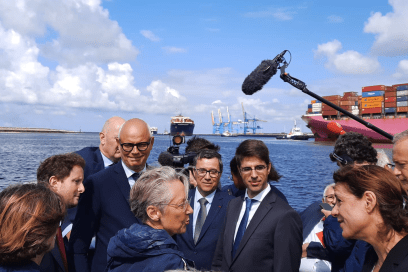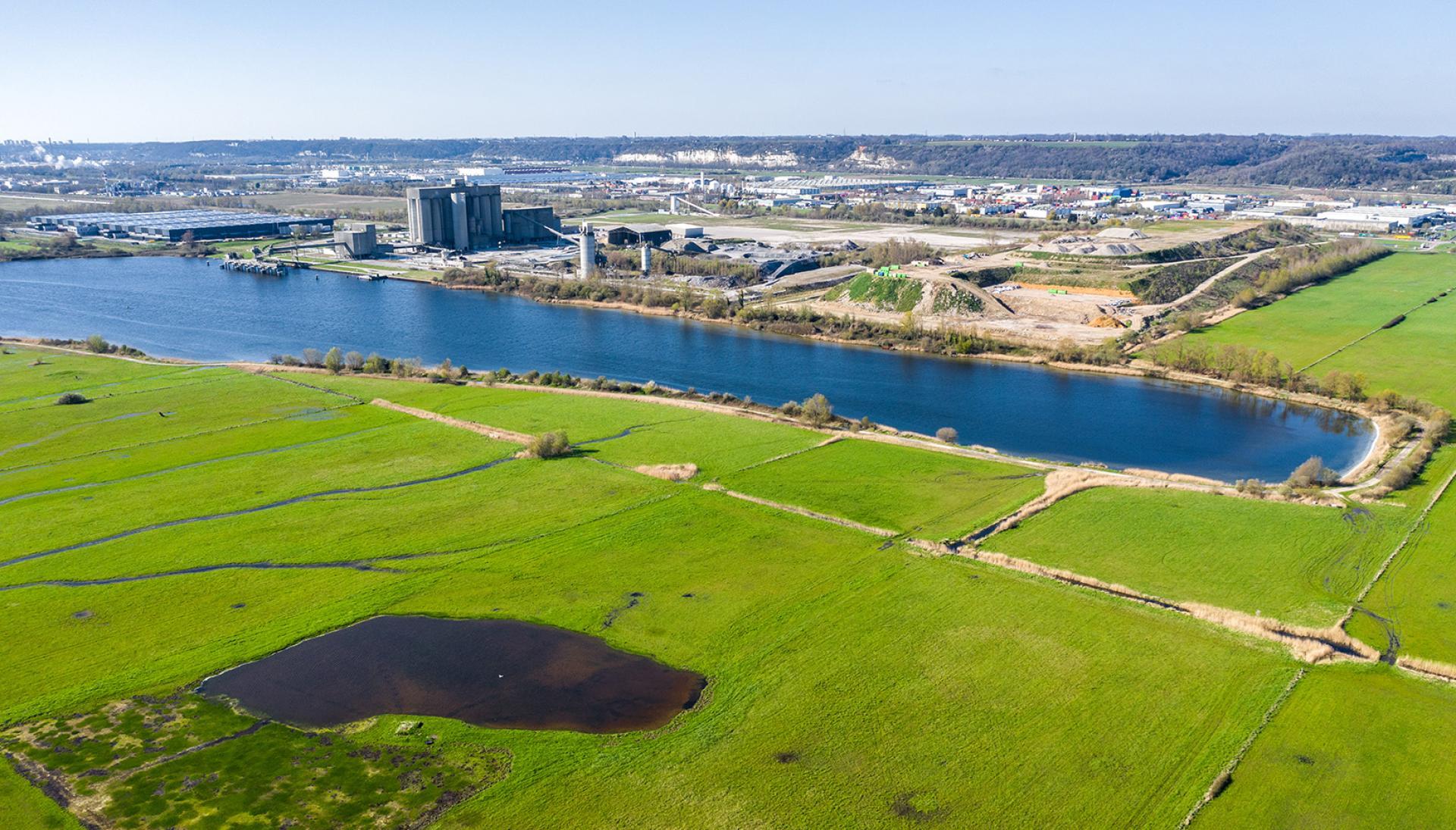- ABOUT US
- CARGO
- A multi-sector focus
- A maritime service offering in the first rank
- An attractive multimodal offering
- An expanded short sea service offering
- Port terminals and shared-use quays
- High-quality ship services
- Fluid, facilitated goods throughput
- A port that puts its performance figures in the public domain
- PASSENGERS
- MULTIMODALITY
- ECOLOGICAL TRANSITION
- INNOVATION
ENGIE, lauréat de l’appel à projet Grand Canal lancé par HAROPA PORT
It's official: HAROPA PORT and Engie have signed a temporary occupation agreement for the allocation of 24 ha on the Grand Canal turnkey industrial site.
Engie, which is the winner of the call for projects launched by HAROPA PORT in march 2022, will develop 2 unique and innovative projects in the industrial port area of Le Havre.
SALAMANDRE: an industrial and commercial biomethane production unit
Using dry biomass from local wood-waste and solid recovered fuel, the unit will produce synthetic biomethane for shipping, specially for the CMA CGM (Engie’s partner).
A production of 11,000 tons a year, in the form of liquefied natural gas (LNG), is targeted. For around 60,000 tons of CO2 emissions avoided (compared with the use of fossil natural gas).
Scheduled on 2027.
KerEAUzen: an e-kerosene, e-naphtha and e-hydrogen unit
Engie is also involved in the France KerEAUzen project, a synthetic fuels production unit for air transport and green chemistry. It will produce e-kerosene, e-naphtha and e-hydrogen obtained from renewable hydrogen produced by a 250 MW electrolysis unit and CO₂ captured on the industrial port area, thanks to the SALAMANDRE’s project.
Annual kerosene production will approximately reach 70,000 tons per year by combining recycled local CO₂ and renewable hydrogen. On average, 270,000 tons of CO₂ from SALAMANDRE and local manufacturers will be recycled each year.
For this project, ENGIE is partnering Air France, which will be the main consumer for its Roissy Charles de Gaulle and Orly airports.
This future plateform is part of HAROPA PORT’s ambition to contribute to the reindustrialization and territorial development of the Seine axis, and to create a sustainable ecosystem..

